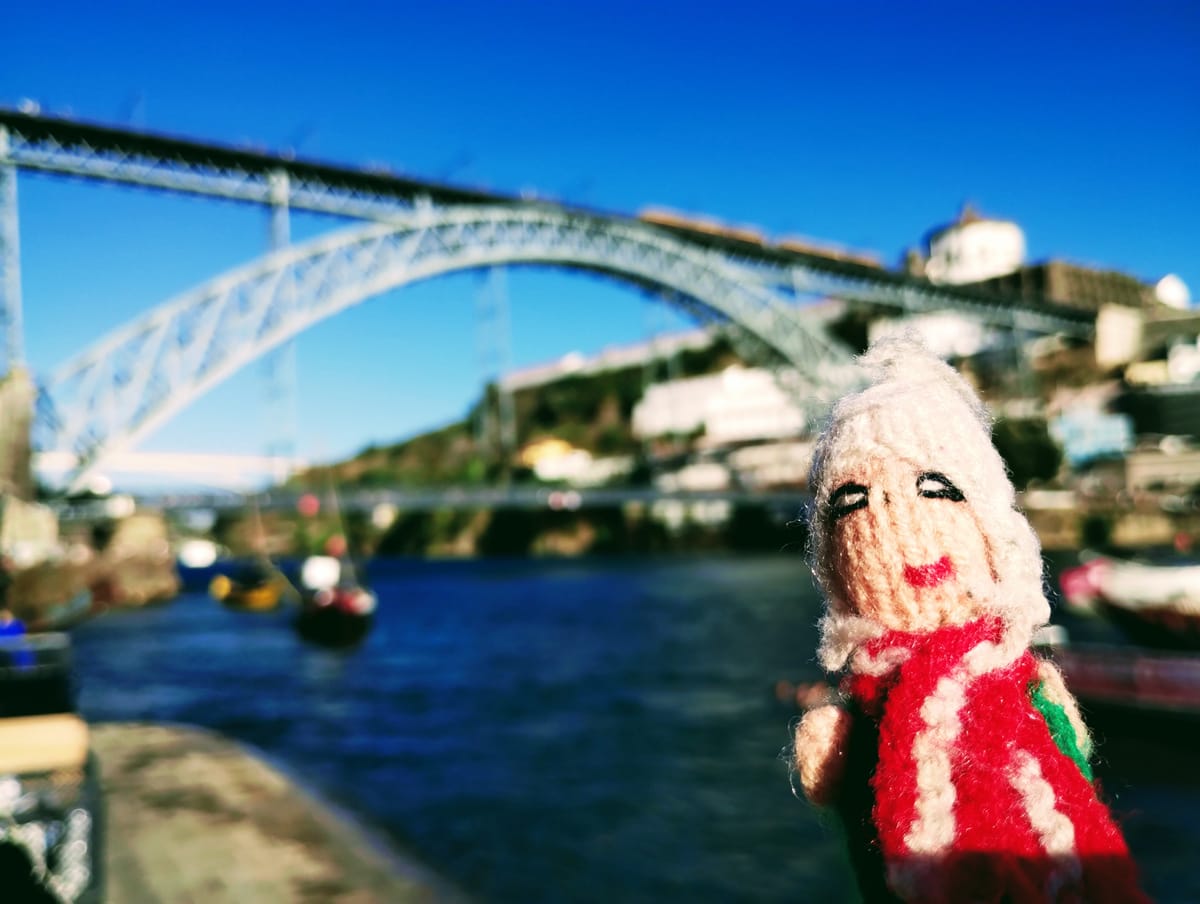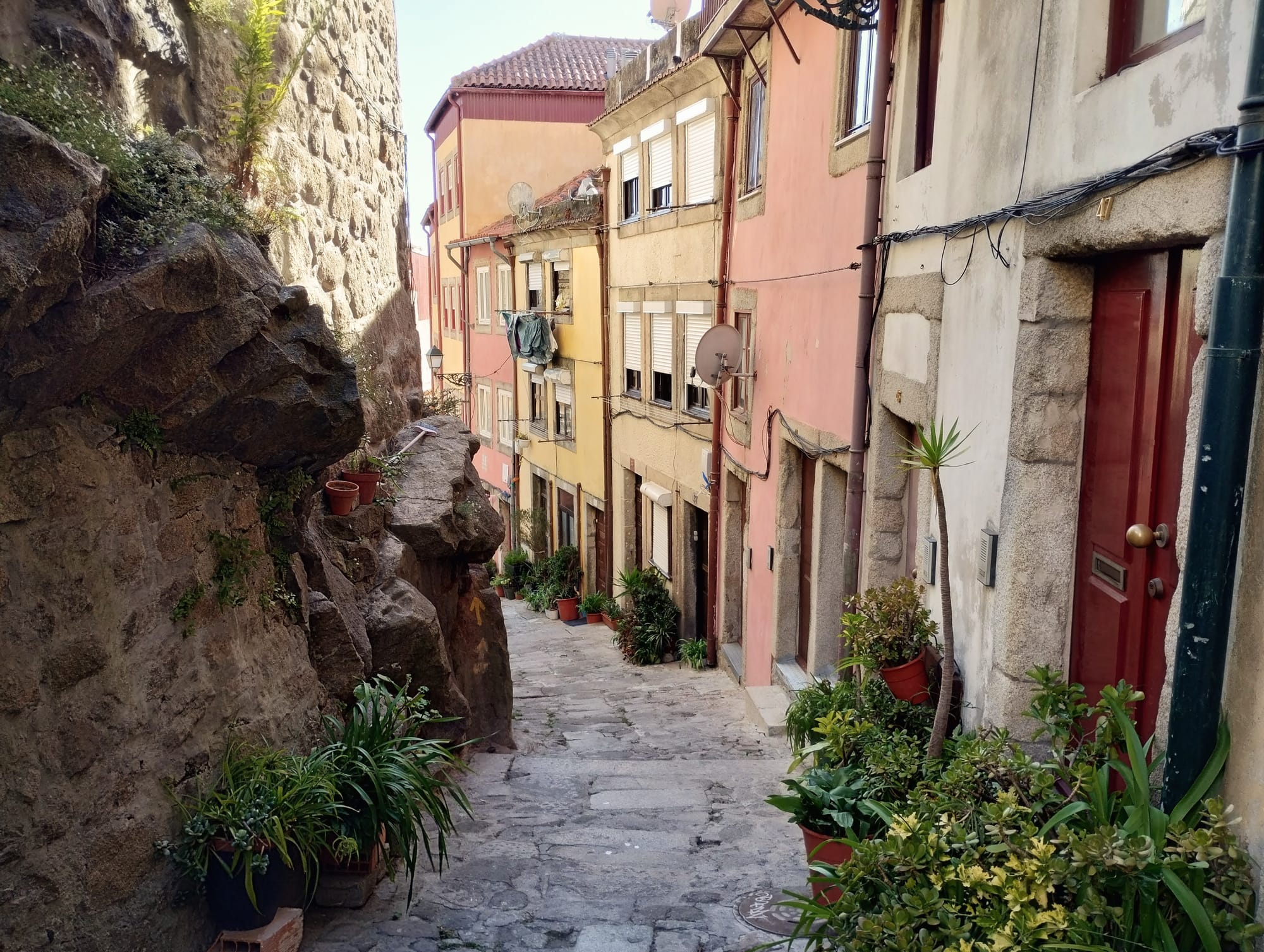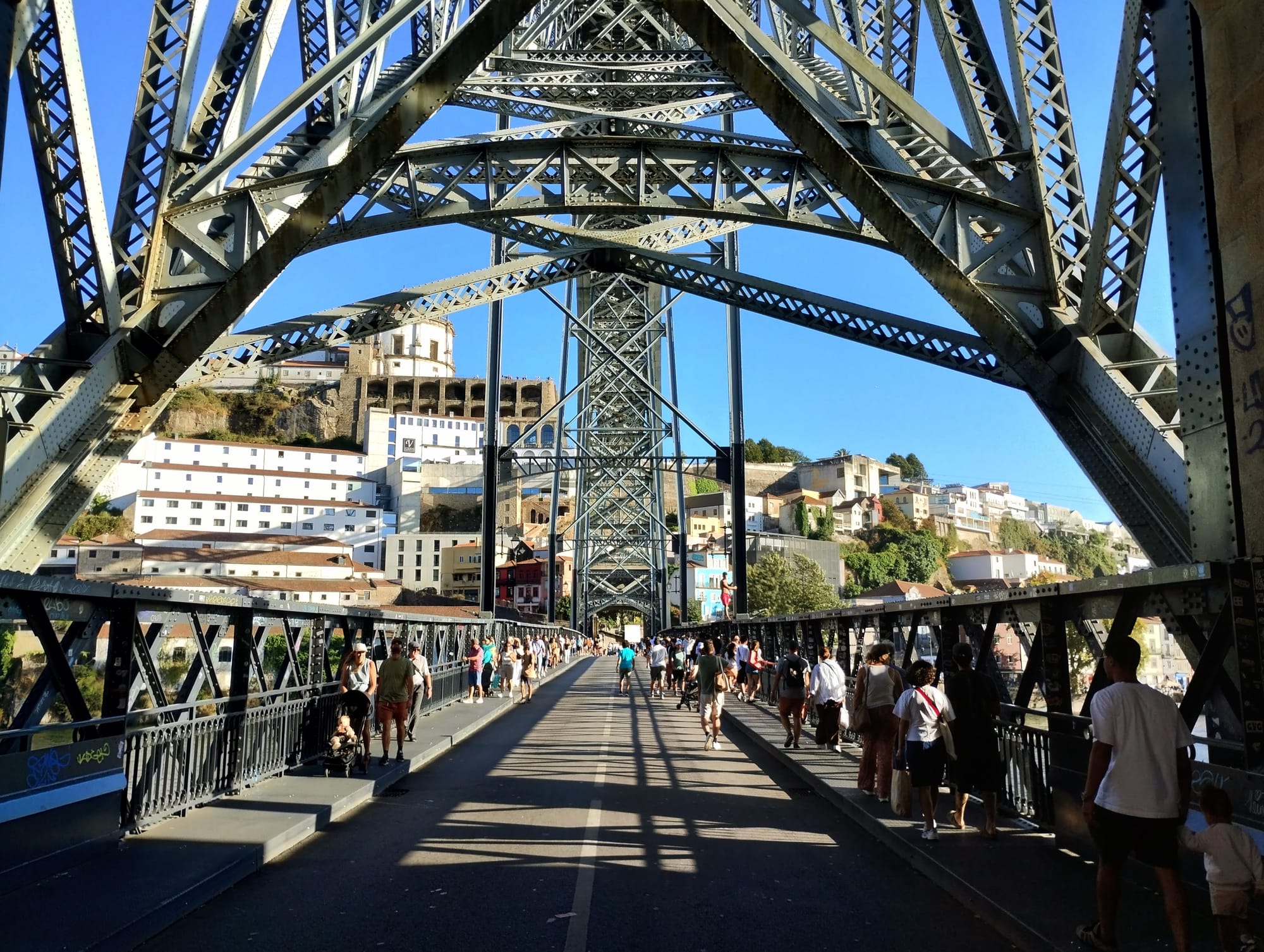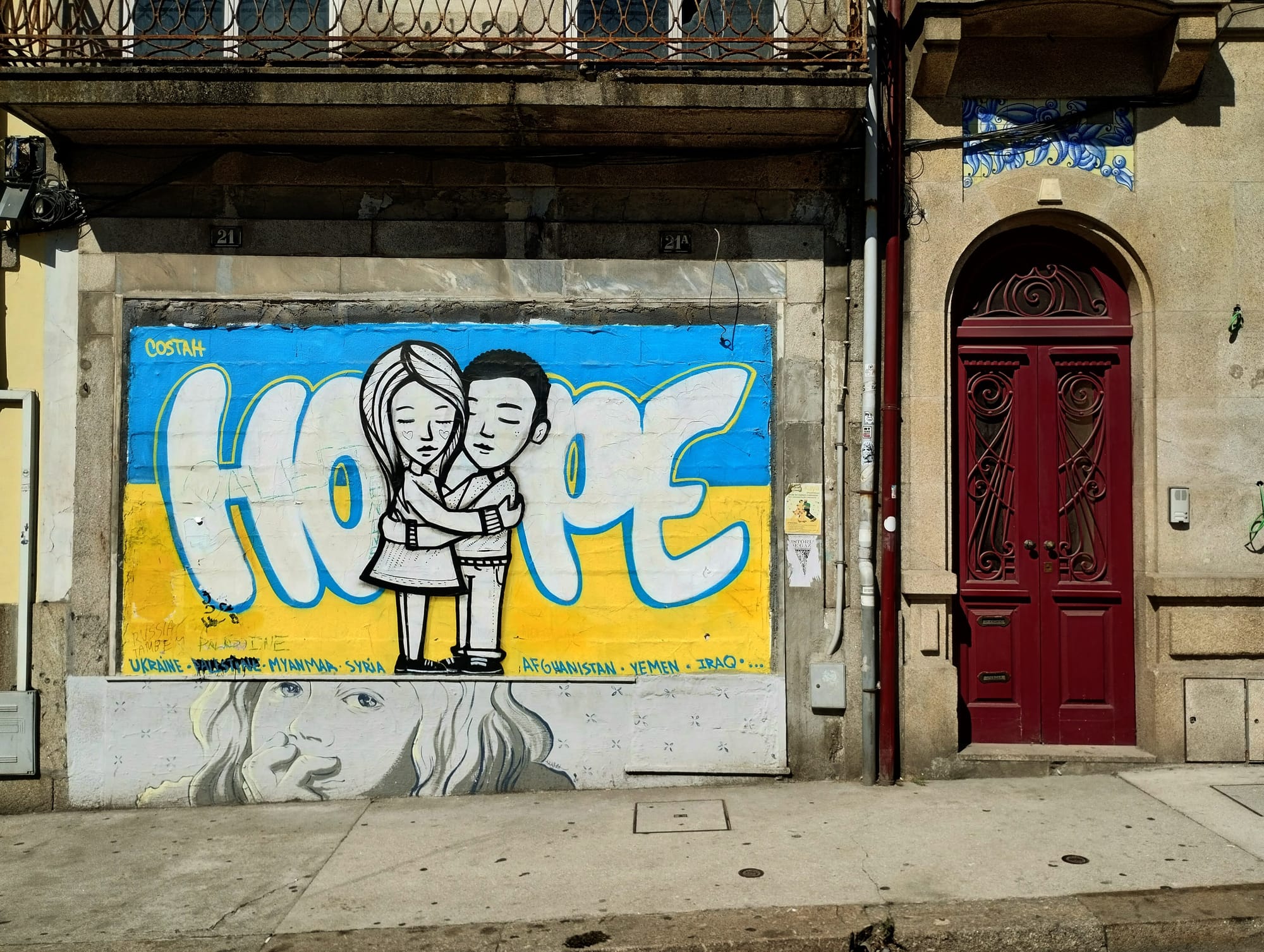Iberian return, day four: Porto
My legs hurt.

Porto is an interesting place. Let me start before I potentially denigrate it by saying that Hostess has accepted that shabby chic is a perfectly acceptable description of her home town.
A lot of the city is undergoing heavy construction work. Amid shiny restaurants and glamorous historical buildings, there are still derelict houses in varying states of serious disrepair and scaffold. This revitalisation has, of course, seen a parallel gentrification of older areas which is pushing the prices up progressively. Around where I'm staying, the older generations still set their camping chairs up in the street and happily leave their front doors open while pottering about in the kitchen. The drug dealers are friendly.
It's an interesting dynamic.
Hostess suggested that we be ladies what do lunch in a little café near her house, just "a short walk away." My day started with what I would classify more as an extreme urban hike than the gentle stroll I'd been sold to Santa Catarina, an up-and-coming area full of bright young things doing their things, plus one wheezing ginger puppet-handler pretending that a sudden and deep interest in a mural on an electricity cabinet is the result of an arcane interest in street art and not a need to stop and wonder when the uphill horror will end.
After a lovely brunch of vegetarian loveliness with lots of kale, my favourite vegetable, and – we were assured – a "guilt-free" cake for pudding/exercise mitigation, it was decided that some exploration was in order. We visited the university, the old prison, and generally ambled to Hostess' favourite gawping spot, Miradouro da Vitória, where lovely views of the river and "other side" of the city are afforded between bouts of influencing and hawking.

Deliberately and recklessly abandoned after lunch, I found myself left to my own devices and embarked on an afternoon of meandering through some of Porto's smaller, less touristy bits. Lest we forget for a moment that I too am part of the affliction, they are everywhere. It's peak season, of course, but it seems to be an endless fight through droves of the waking dead, their phones surgically attached to their hands. The older people living in their perfectly lovely bunting-adorned streets must really have had it up to the eyeballs with the tourists, but appear to have adapted by opening little street stalls selling nibbles and tat.
The Douro is the river that runs through Porto, separating the Ribeira district to the north, with its narrow cobbled streets winding past merchants’ houses and cafes, and the Vila Nova de Gaia, to the south with "the other half." Across it span a series of bridges, the most magnificent of which is the Dom Luís I Bridge, a double-deck metal arch bridge that sweeps over the river.
I tried crossing to the other side out of curiosity, but it was not really the pleasing tourist experience I'd been expecting. The problem with very high bridges is that they tend to sway a little and there are frequent gusts of wind. They are also of little interest if you're on them, as all you can do is look at things that are not bridge. Add to these ailments the interminable dance of the selfie-stick-wielding pedestrians and bell-ringing trams, the latter occasionally causing the former to scatter in all directions clutching their digital pearls, and by the time you've made it half-way across it's really time to give up, turn round, and go back home again for a siesta.
Reposed, I tried my luck at the cathedral, only to discover there's an entrance fee to be paid to enter a place of worship, something that still rankles. I wound my way down the wobbly cobbles down to the Cais de Ribeira, where the restaurants and bars became even more expensive, and the flesh quotient went up with youths in red shorts variously jumping into and swimming in the river, much to the amusement of the tourist boats they'd occasionally swim alongside, like reckless tanned dolphins.

The bridge is more interesting from the bottom and it makes more obvious the tremendous feat of Gustave Eiffel's student, Théophile Seyrig. At the time of its completion in 1886, this bridge was the longest iron arch in the world. From there, a narrow staircase – the Escadas dos Guindais – led me away from the Avenida Gustavo Eiffel up some more interminable steps, where I was able to meet plenty of other wheezing people, past a concentrated stash of street art by Hazul, a Porto native born in 1981 whose works are widespread across the city. The steps, eventually, lead to tiny little eateries with fabulous views across the terracotta rooftops of the bridge.
More siesting was required in the afternoon, due to the stress of the Renfe site now apparently not having any trains ever, potentially stranding me in Porto when I was supposed to be going back to be home before Monday. I seem to remember encountering this problem while "planning", and why I didn't book trains before leaving is beyond me.
In the evening I walked some more, and found myself grazing on pintchos (sic) and other lovely treats in the Coração de Bolhão, Porto's historic food market. First conceived in 1837, the market opened in 1839 on land acquired from the Church by the city council. In 1914 the first building to enclose the market was built and since then its numerous stalls and restaurants have provided fresh food and produce to locals and tourists alike. It was classified as a Property of Public Interest in 2006 and a Monument of Public Interest in 2013.
The Portuguese are good at contactless payments, but my hostel demands cash for the city tax, which led me on a tour of cash machines around the city vainly looking for one that was not trying to violate me for 5€ for the pleasure of withdrawing cash with an international card. The actual banks, rather than the tourist-magnet cash machines that seem to spawn in doorways, offer fee-free withdrawals. I was served in the end by a Caixa Geral de Depositos machine, and wandered back to the hostel for my free sangria and party vibe which I enjoyed with a 29-year-old Kiwi surfer on a on a non-ironic world tour of self-discovery, and a Dutch surfer girl named Bonnie who seemed amused that the only Dutch I know is “kan het ik hier blowen?”
The evening went on longer and with more wine than was probably wise.
